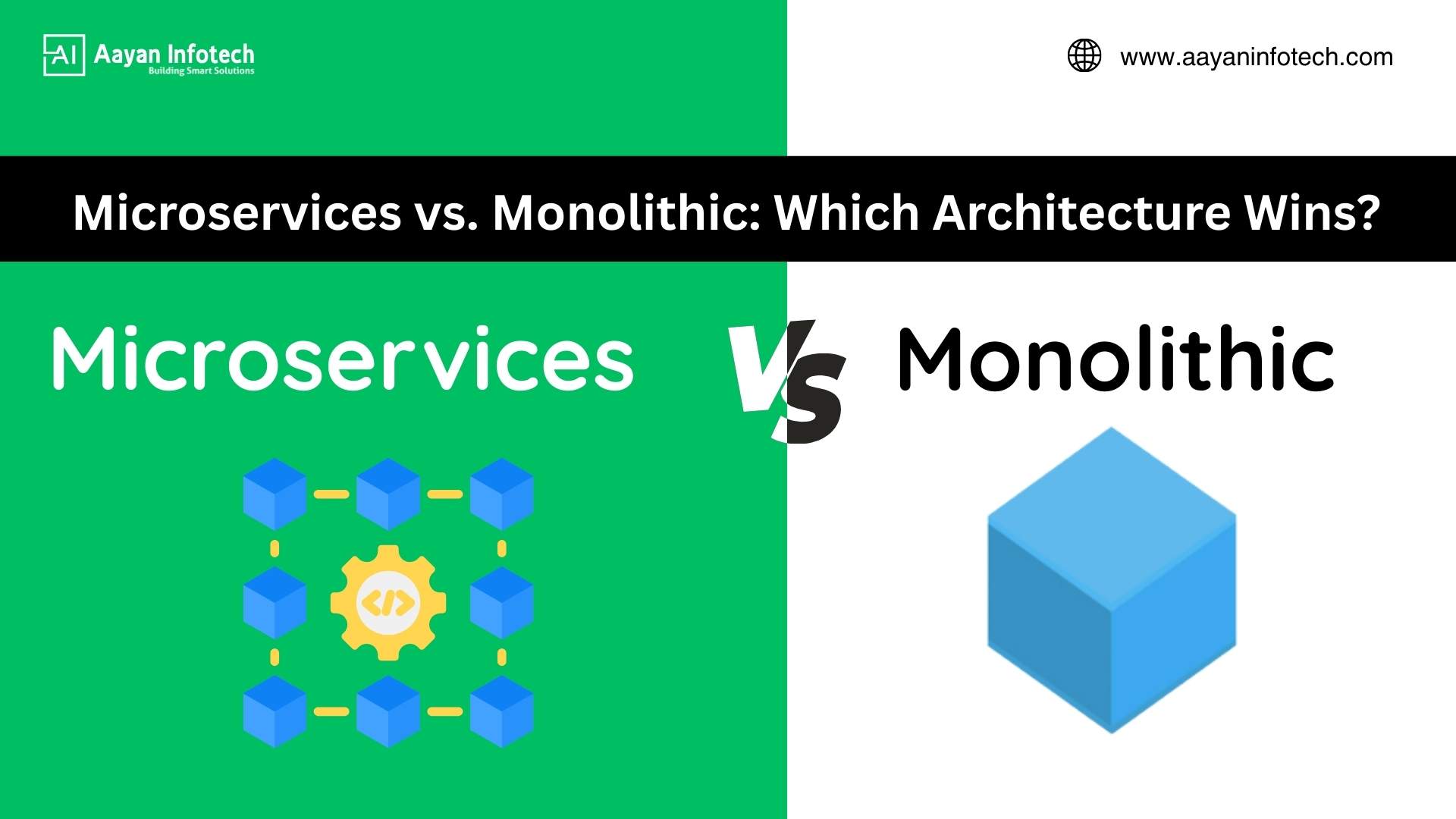
When companies design a new application development, one question always arises: microservices vs. monolithic—which architecture is superior? Some will say that monoliths are old hat; others will say that microservices introduce unnecessary complexity. The truth is not so binary. Both have their strengths, both have their weaknesses, and the best option usually depends on where you’re at in your life cycle.
Let’s break it down together.
Before comparing, let’s clear the basics. What is a monolithic application?
Think of it as one big block of code. In a monolithic setup, the user interface, business logic, and database access all sit inside a single codebase. They run as one unit.
Imagine a classic e-commerce website. Product catalog, shopping cart, checkout process, and shipping are packaged in a single bundle. When you make a change to the checkout logic, you have to redeploy the entire application. That’s the beauty and limitation of monoliths simplicity at the cost of being tightly coupled.
A good example of monolithic architecture is Instagram in its initial stages. At that time, the website was lean and rapidly growing. One codebase made it easy for the team to deploy new features with rapid speed. Testing and deployment were easy.
But when users grew, so did this same architecture. Scaling checkout, search, or notifications scaled everything else. That hindered innovation and made the system brittle. Instagram finally shifted to microservices to service the world.
So there’s the take-home: monoliths can take you to market fast, but they can keep you from scaling when things catch fire.
Okay, now let’s turn the coin. Microservices split that large block into little, autonomous pieces. Each service performs one task—payments, search, recommendations, or notifications—and communicates with the others through APIs.
Why is this important? Because it alters the way you scale, update, and even staff. If the payment service requires an upgrade, you simply redeploy the service. If the search service crashes, the rest of the system continues to function.
That is why companies like Netflix and Amazon depend on microservices. Their platforms must be resilient, always innovative, and scalable on a feature-by-feature basis without taking the whole system down.
Here’s a side-by-side comparison of monolithic vs. microservices:
| Aspect | Monolithic Architecture | Microservices Architecture |
| Structure | Single, single codebase | Multiple small, individual services |
| Scalability | The whole system scales together | Each service scales separately |
| Deployment | Redeploy the entire app for any update | Deploy services independently |
| Failure Impact | A defect can take down the entire app | Problem contained to one service |
| Team Structure | One big, monolithic team | Smaller teams per service |
| Technology Stack | Typically one language/framework | Flexibility to combine tech stacks per service |
| Speed of Launch | Fast for small projects and MVPs | Slower launch but more durable in the long run |
| Maintenance | Simpler in the beginning, harder as the system matures | Complicated, but scales with growth |
This table illustrates why so many startups begin monolithic: it’s faster and less expensive. But when growth necessitates more flexibility, microservices win.
It’s simple to write off monoliths as “old-school,” but they’re far from over. Some benefits include:
If you’re an enterprise greenlighting a new idea, a monolith can be the most intelligent choice. It allows you to ship quickly and learn without massive overhead.
The problems emerge when the application begins to scale:
By this point, businesses usually start making plans to move to microservices.
Microservices come into the picture when scale, flexibility, and resiliency are of the essence. Here’s why they’re strong:
This architecture is best suited to platforms that service millions of users and require continuous updates with no downtime.
And, of course, microservices aren’t a silver bullet. They have trade-offs:
Microservices will overwhelm small businesses without the proper team and resources.
Here comes the million-dollar question: who wins the microservices vs. monolithic battle?
The solution is up to your context.
At Aayan Infotech, we’d actually recommend a hybrid approach. Begin monolithic to release your product quickly. As your company expands, shift segments of the system to micro services over time. This fashion gives you the advantages of both worlds—speed at first and flexibility afterward.
The monolithic versus microservices argument is not about calling an overall winner. It’s about calling the right choice at the right moment.
A monolithic application is similar to constructing one strong house—fast, cheap, and easy to control in the beginning. A microservices system is similar to planning a city with numerous autonomous buildings—more complicated, but much more extensible and robust in the long term.
The true champion is the architecture that fits your business objectives today and has space for tomorrow’s expansion. And that’s where careful planning is most critical.
Call Aayan Infotech at +917007120194 or mail us at info@aayaninfotech.com for more information.